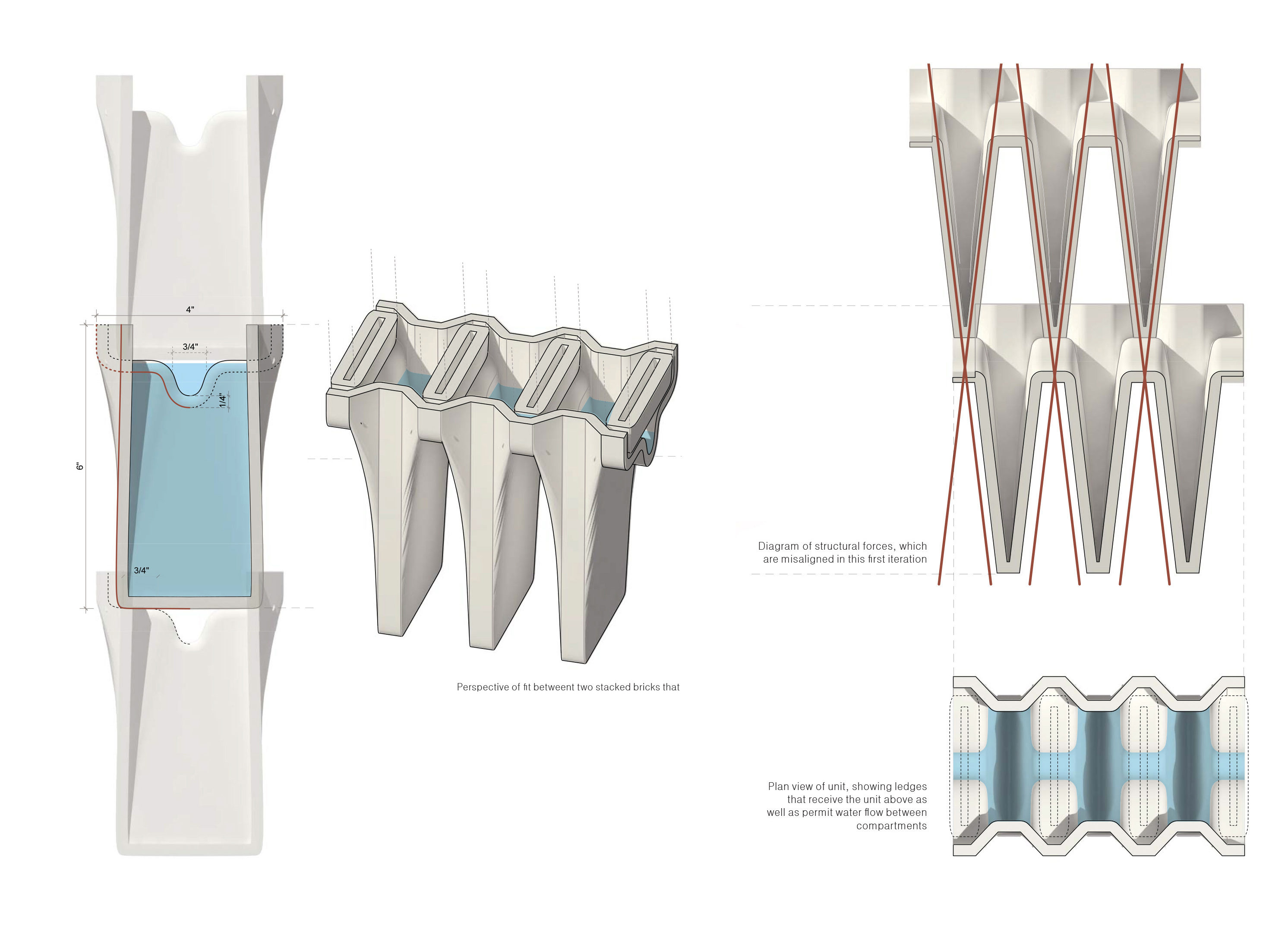Terracotta Bricks

Unfamiliar with many of the properties and methods of working with ceramics—armed only with a knowledge of the material research process and a substantial collective design background—the goal of this project was to unite a large-scale architectural agenda with an existing vocabulary of techniques from the ceramics realm. With a focus on light, visual permeability and the use of digital tools to aid in the design process, Celosía Cosída began with the idea that we wanted to create an adaptive, architectural screen with a large number of potential functions and configurations. The idea of modularity quickly came to be another key point of the research as the process of slip casting and creating a series of “molds and multiples” presented itself as the obvious choice for integrating digital fabrication and ceramics.
The hypothesis of the research phase ultimately became that with a single mold, varying only the perforations that allowed light and air to pass through the module, we could create a highly-versatile, visually-elegant screen that incorporated lighting elements and even ways of conditioning a space through radiative heating or evaporative cooling. Though the spatial conditioning was deemed to be an unreasonable endeavor with ceramics at this scale and with the given timeframe of the research, the question of how to do it remains an interesting problem and is explored — though not to any full extent — in this document.
From the beginning of the design process, we were intrigued by the possibilities offered by a cylindrical shape. We wanted to explore the different results that are made possible by the inherent flexibility that rotation offers in relation to creating visual permeability. We experimented with both vertical and horizontal stacking patterns, starting with a simple cylinder and addin curvature as we moved on. Our final component consists of a 90-degree curved pipe, with the dimensions as shown above. Aside from the curved component, our formation required a T-shaped piece, that would connect the end points on the floor and on the ceiling.
Student team
Alexander Jacobson, Josh Schecter, Christina Papadopoulou, Annapurna Akkineni (MDes EE ’16)
Sponsored by ASCER